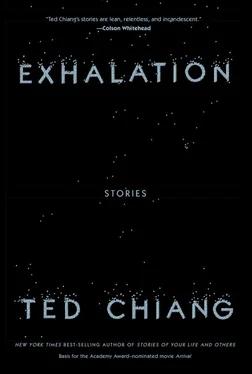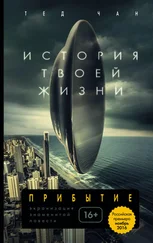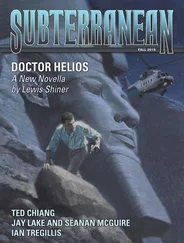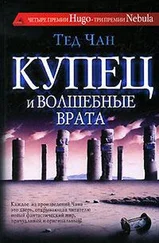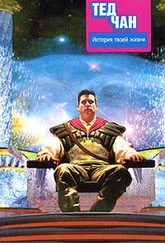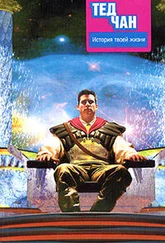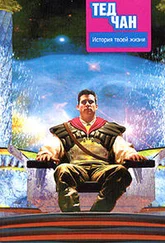Every few years, I would be reminded of this question and think about it again, but I never made any headway on building a story around it. Memoirists have written eloquently about the malleability of memory, and I didn’t want to simply rehash what they’ve already said. Then I read Walter Ong’s Orality and Literacy, a book about the impact of the written word on oral cultures; while some of the stronger claims in the book have come under question, I still found it eye-opening. It suggested to me that there might be a parallel to be drawn between the last time a technology changed our cognition and the next time.
“THE GREAT SILENCE”
There are actually two pieces titled “The Great Silence,” only one of which can fit in this collection. This requires a little explanation.
Back in 2011 I was a participant in a conference called “Bridge the Gap,” whose purpose was to promote dialogue between the arts and the sciences. One of the other participants was Jennifer Allora, half of the artist duo Allora & Calzadilla. I was completely unfamiliar with the kind of art they created—hybrids of performance art, sculpture, and sound—but I was fascinated by Jennifer’s explanation of the ideas they were engaged with.
In 2014 Jennifer got in touch with me about the possibility of collaborating with her and her partner, Guillermo. They wanted to create a multiscreen video installation about anthropomorphism, technology, and the connections between the human and nonhuman worlds. Their plan was to juxtapose footage of the radio telescope in Arecibo with footage of the endangered Puerto Rican parrots that live in a nearby forest, and they asked if I would write subtitle text that would appear on a third screen, a fable told from the point of view of one of the parrots, “a form of interspecies translation.” I was hesitant, not only because I had no experience with video art, but also because fables aren’t what I usually write. But after they showed me a little preliminary footage I decided to give it a try, and in the following weeks we exchanged thoughts on topics like glossolalia and the extinction of languages.
The resulting video installation, titled “The Great Silence,” was shown at Philadelphia’s Fabric Workshop and Museum as part of an exhibition of Allora & Calzadilla’s work. I have to admit that when I saw the finished work, I regretted a decision I made earlier. Jennifer and Guillermo had previously invited me to visit the Arecibo Observatory myself, but I had declined because I didn’t think it was necessary for me to write the text. Seeing footage of Arecibo on a wall-sized screen, I wished I had said yes.
In 2015, Jennifer and Guillermo were asked to contribute to a special issue of the art journal e-flux as part of the fifty-sixth Venice Biennale, and they suggested publishing the text from our collaboration. I hadn’t written the text to stand alone, but it turned out to work pretty well even when removed from its intended context. That was how “The Great Silence,” the short story, came to be.
“OMPHALOS”
What we now call young-earth creationism used to be common sense; up until the 1600s, it was widely assumed that the world was of recent origin. But as naturalists began looking at their environment more closely, they found clues that called this assumption into question, and over the last four hundred years, those clues have multiplied and interlocked to form the most definitive rebuttal imaginable. What would the world have to look like, I wondered, for it to confirm that original assumption?
Some aspects were easy to imagine: trees without growth rings, skulls without sutures. But when I started thinking about the night sky, answering the question became significantly harder. Much of modern astronomy is premised on the Copernican principle, the idea that we are not at the center of the universe and are not observing it from a privileged position; this is pretty much the opposite of young-earth creationism. Even Einstein’s theory of relativity, which presupposes that physics should look the same no matter how fast you’re moving, is an outgrowth of the Copernican principle. It seemed to me that if humanity really were the reason the universe was made, then relativity shouldn’t be true; physics should behave differently in different situations, and that should be detectable.
“ANXIETY IS THE DIZZINESS OF FREEDOM”
In discussions about free will, a lot of people say that for an action of yours to be freely chosen—for you to bear moral responsibility for that action—you must have had the ability to do something else under exactly the same circumstances. Philosophers have argued endlessly about what exactly this means. Some have pointed out that when Martin Luther defended his actions to the church in 1521, he reportedly said, “Here I stand, I can do no other,” i.e., he couldn’t have done anything else. But does that mean we shouldn’t give Luther credit for his actions? Surely we don’t think he would be worthier of praise if he had said, “I could have gone either way.”
Then there’s the many-worlds interpretation of quantum mechanics, which is popularly understood to mean that our universe is constantly splitting into a near-infinite number of differing versions. I’m largely agnostic about the idea, but I think its proponents would encounter less resistance if they made more modest claims about its implications. For example, some people argue that it renders our decisions meaningless, because whatever you do there’s always another universe in which you make the opposite choice, negating the moral weight of your decision.
I’m pretty confident that even if the many-worlds interpretation is correct, it doesn’t mean that all of our decisions are canceled out. If we say that an individual’s character is revealed by the choices they make over time, then, in a similar fashion, an individual’s character would also be revealed by the choices they make across many worlds. If you could somehow examine a multitude of Martin Luthers across many worlds, I think you’d have to go far afield to find one that didn’t defy the church, and that would say something about the kind of person he was.
Thanks to everyone at the Sycamore Hill and Rio Hondo workshops for reading my early drafts. Thanks to Karen Joy Fowler, Molly Gloss, Daniel Abraham, Benjamin Rosenbaum, Meghan McCarron, Geoff Ryman, Moses Tsenongu, Richard Butner, and Christopher Rowe for their feedback on various stories. Thanks to Jennifer Allora and Guillermo Calzadilla for the invitation to collaborate. Thanks to Tim O’Connell for believing in this book, and to Kirby Kim for believing in me. And thanks to Marcia Glover, for everything.
These stories were originally published as follows:
“The Merchant and the Alchemist’s Gate,” Fantasy and Science Fiction, and by Subterranean Press, 2007
“Exhalation,” Eclipse Two, Night Shade Books, 2008
“What’s Expected of Us,” Nature, 2005
“The Lifecycle of Software Objects,” Subterranean Press, 2010
“Dacey’s Patent Automatic Nanny,” The Thackery T. Lambshead Cabinet of Curiosities, Harper Voyage, 2011
“The Truth of Fact, the Truth of Feeling,” Subterranean Online, 2013
“The Great Silence,” e-flux, 2015
Ted Chiang’s fiction has won four Hugo, four Nebula, and four Locus awards, and he is the recipient of the John W. Campbell Award for Best New Writer and the Theodore Sturgeon Memorial Award. His debut collection, Stories of Your Life and Others, has been translated into twenty-one languages. He was born in Port Jefferson, New York, and currently lives near Seattle, Washington.
Читать дальше
